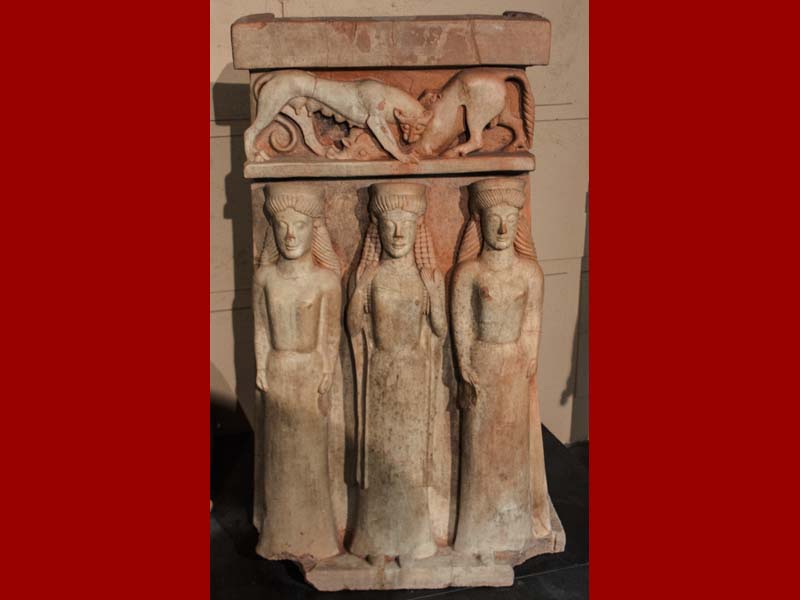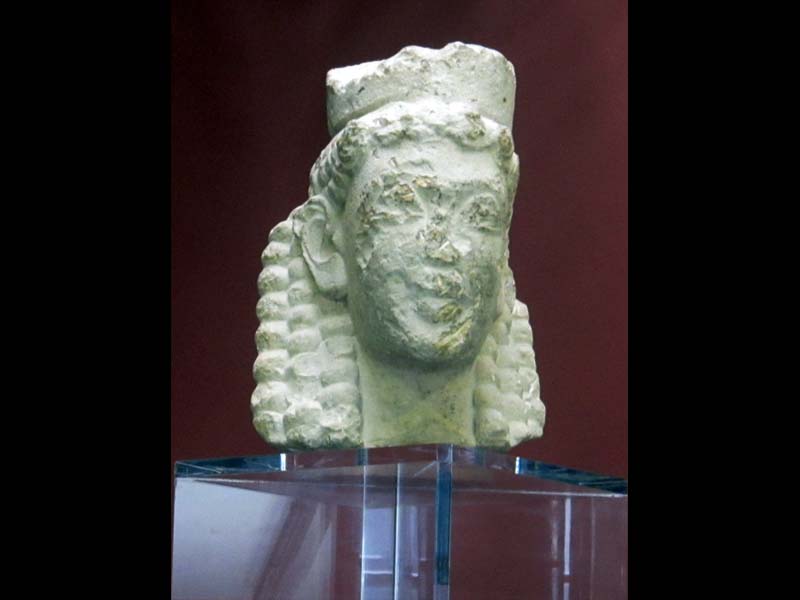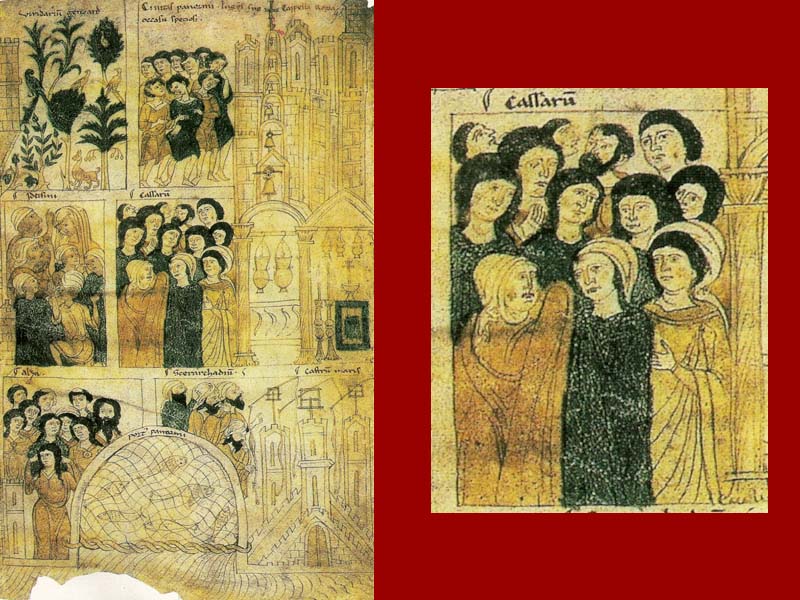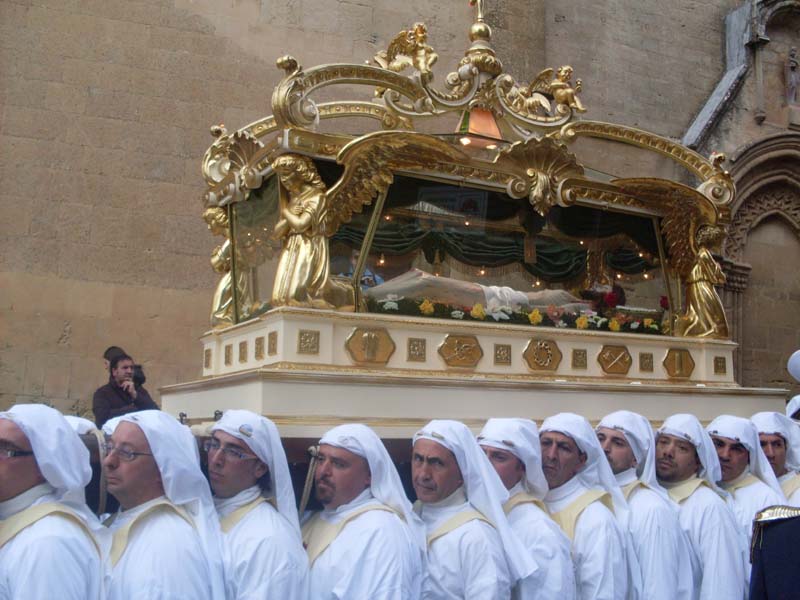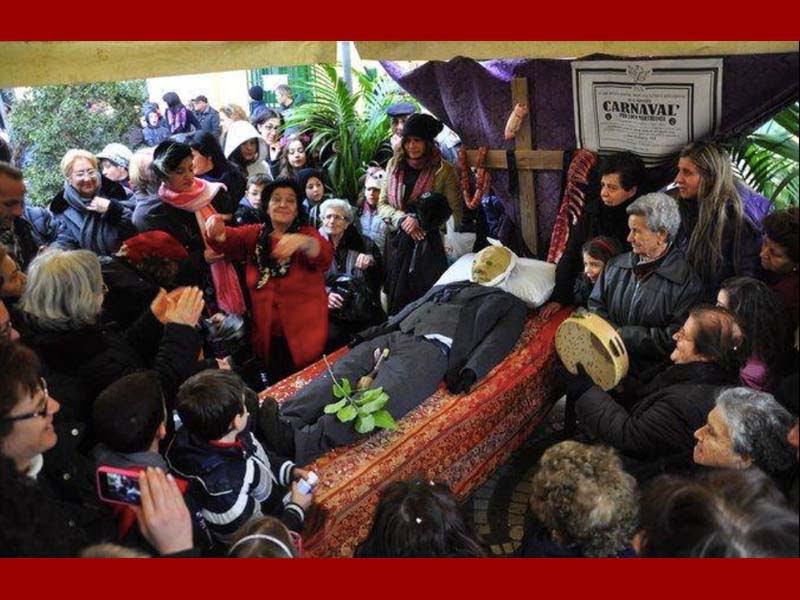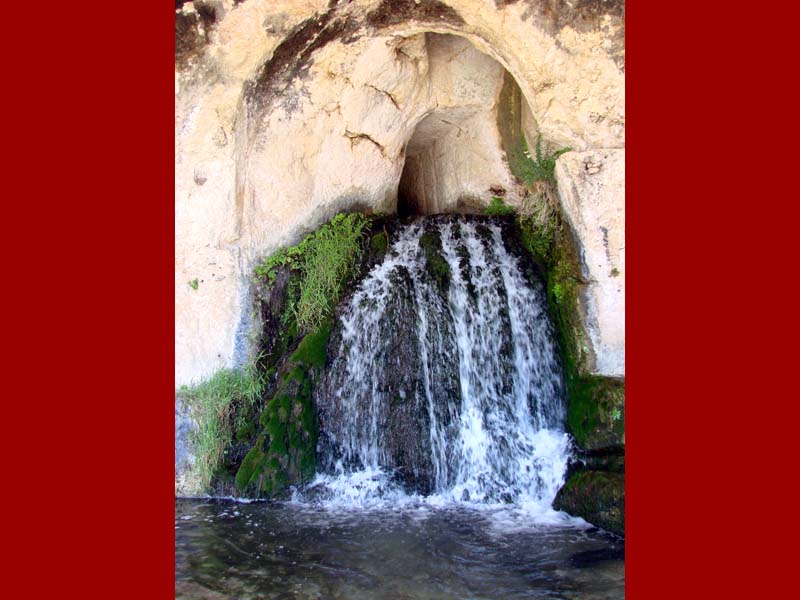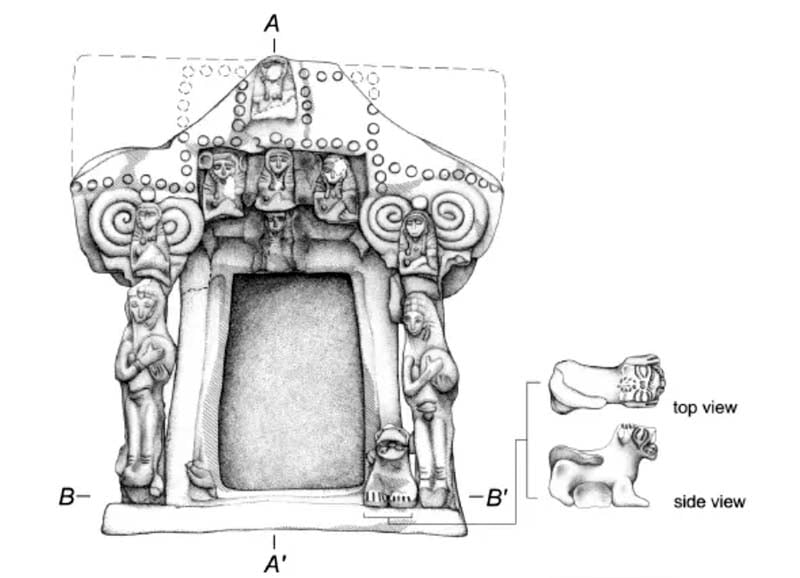di Barbara Crescimanno
The cult paid to the nymphs bears witness to an interweaving of plans – very concrete and embodied – that today we feel distant and separate from each other (the human, divine, animal, vegetable, sacred and profane world); evidence of a relationship between human beings and the 'Kosmos' that is much more fluid, respectful and healthy than the current one, which instead relates to the natural world as extraneous and objectified with respect to a 'superior' human ego.
My research stems from the study of Sicilian female musical practices relating to the frame drum, research that includes both percussive techniques and, more generally, the cultural and cultic practices that revolve around this instrument.
The frame drum has been, since its first appearance, a cult instrument; the American percussionist Layne Redmond highlighted it in her text "When women played the drums": the first study that linked together, in a complex and articulated way, musical and social aspects with gender studies.
Starting from the contemporary forms of dance and traditional music in Sicily, we began to investigate their history and relationships with the sacred, discovering that the oldest archaeological evidence related to music and dance in Sicily show a culture deeply intertwined with the feminine, linked to of the divine entities called 'Nymphs': marginal figures in the history of religions but with an extremely complex nature, who, upon closer examination, turn out to be key figures in the daily cultic life of the island; figures with nymphal characteristics are actually attested throughout the Mediterranean and in Europe since the Neolithic, and their traces remain - albeit transformed and re-functionalized from age to age - up to the present day.
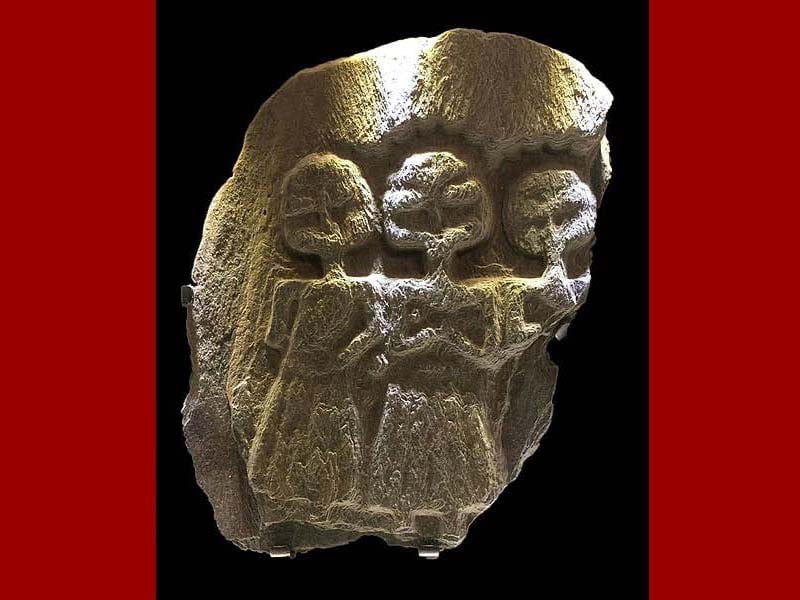
The term 'nymph' is ambiguous, since it has been used to indicate divine, human and animal beings (such as bees), mixing different levels and gathering a symbolic whole that oscillates between a mythical and historical dimension.
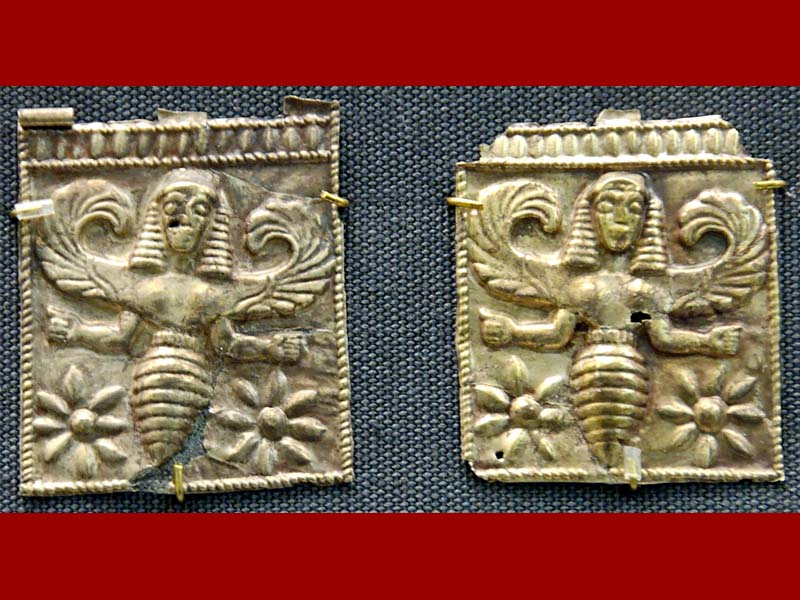
On the divine level, the Nymphs are collective female divinities, linked to the natural world, above all to the waters (see "Nymphs and waters in Sicily. A sacred relationship"). The Nymphaeums are in fact found in natural places such as caves and sources of spring water, places where accumulations of votive objects dedicated to them have been found; when they are in urban areas, near the sanctuaries of divinities of which the Nymphs form the choir (such as Deméter and Kore, a nymph herself), the Nymphaeums architecturally reproduce caves from which water flows.
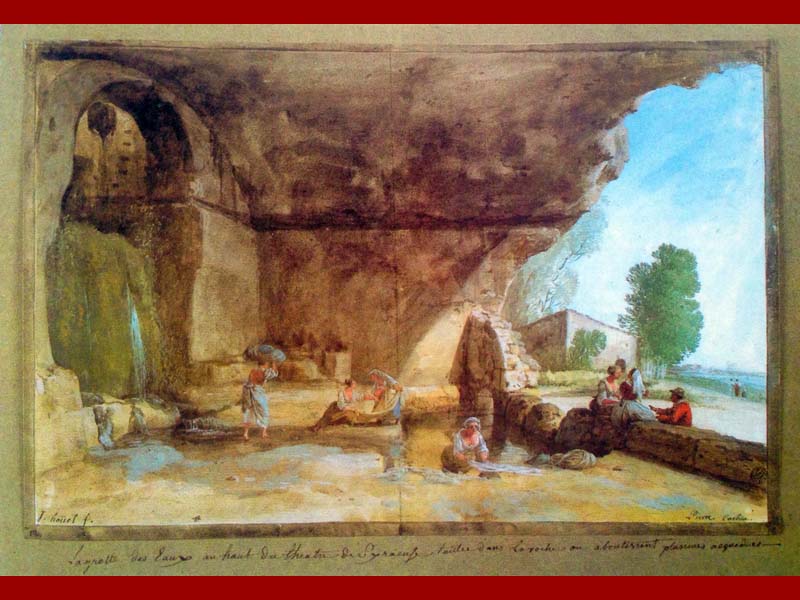
On the semi-divine and human level, the Nymphs have gathered heterogeneous skills, which teach us humans: they are pharmakeutriai, or herbalists; beekeepers; kourothophos, i.e. protective figures of childhood; priestesses leading female rites using tools such as psychotropic substances, dance and rhythm to activate non-ordinary states of consciousness; prophetesses and inspirers of poetry through a form of sacred mania: nympholexia.

These figures are present in rites of passage (according to Van Gennep's definition) in which women change stages of life, such as the transition from childhood to adulthood, marriage, pregnancy and childbirth, and death, even initiation. We will focus on two aspects of these multifaceted characters, starting our story from the end: the ritual that accompanies death.
The figure of the mourner is common to the whole Eurasian continent; like the Irish Banshee, it belongs to the contexts of transformation and transition of status, of which death constitutes an 'archetype'; every ritual death requires the guidance of expert figures able to handle it correctly: the nymphal figures are precisely guardians of the passages, even between the world of the living and that of the dead, just like the ritual mourners. From them we derive the connection between the SACRED FEMALE, DEATH and WATERS, in the form of ritual tears.
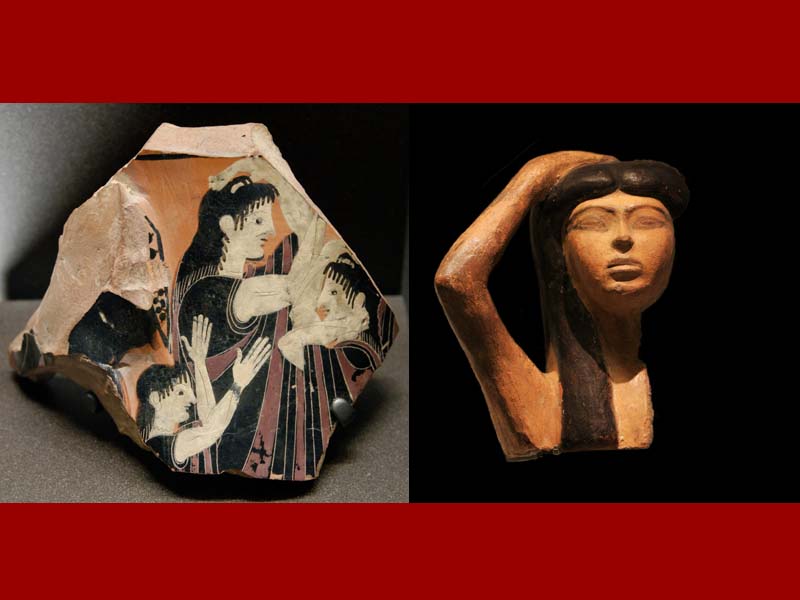
In the funerary cults attested to Ebla in Syria (III millennium BC) we find a peculiar set of Sumerian logograms: “dam IGI: A”, ie: 'woman, eye, water'; literally “the one-eyed water woman”.
It appears to have been a common symbolic ensemble since Neolithic times in Sicily as well, as shown by stylized images of weeping eyes in the form of single or double lozenges from various Sicilian Neolithic sites.
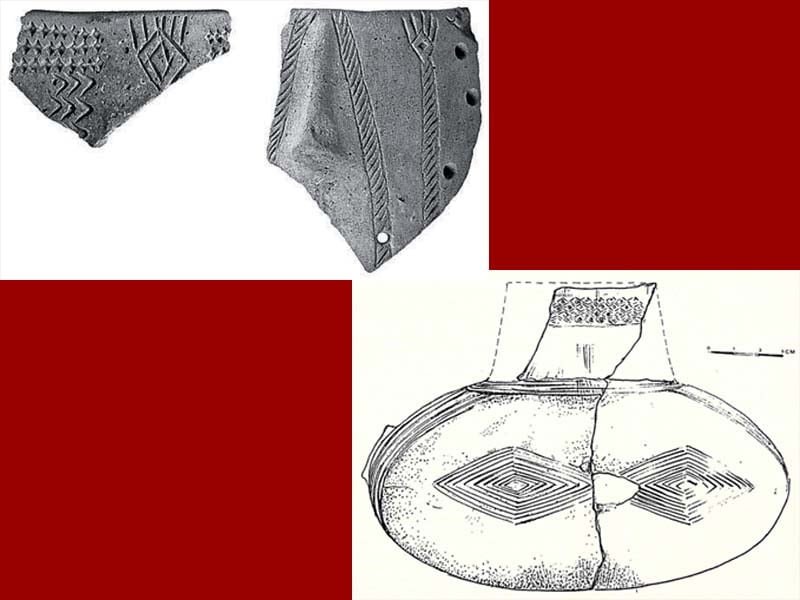
Later, in the archaic Greek era, we will find the same elaborate symbolism, as in the funerary vases with praefic in a circle, surrounded by M-marks indicating water (i.e. tears).
In fact, throughout Europe and the Mediterranean we find myths, fairy tales, legends and traditional songs in which springs, lakes, rivers flow from the tears of women linked to magic or to the world of the dead.
The first mourner we find in literature is Ninshubur: servant, counselor, warrior of the Mesopotamian goddess Inanna in the poem 'The Descent of Inanna into Hell'.
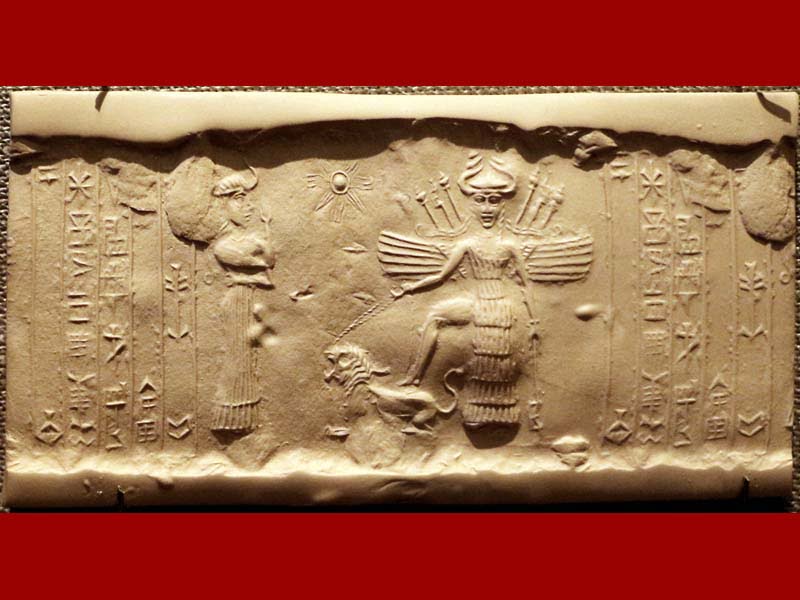
The Goddess, preparing for the journey in which she will die (and then be reborn), says to her:
Ninshubur, my constant support, mia sukkal who gives me wise advice, my warrior who fights by my side, I'm descending into the Kur, the Underworld. If I don't come back, Ninshubur, sing me a lament. Play the drum for me. Walk around the houses of the gods. Tears in the eyes, mouth, thighs.
It is a precise list of the elements of a ritual in which the cosmic, divine and human planes are mixed: the periodic end of fertility on earth (as in the myth of Demeter and Kore), and at the same time the ritual instructions for the journey mystic of initiates and initiates (as in the Eleusinian Mysteries). After three days, Ninshubur begins a dirge with the drum, initiating the process that will lead to divine rebirth (and the rebirth of life on earth); this myth clearly recalls other divine deaths and dirges for Kore, Osiris, Attis, Mitra, Tammuz and for Christ.
In Sicily we have Cyane, the name of both a nymph and a spring near Syracuse, which according to the myth was born from the tears of the nymph at the news of Kore's descent into the Underworld. Mirrors of water are considered (not only in Sicily) openings to the chthonic world. The Cyane spring is in fact also a place of initiation, and here the Syracusan girls, ready to pass from childhood to adulthood, dedicated their tympana (frame drums) to the Nymphs and Artemis; it is the color cyan (a dark blue) and not black, the color of mourning for the Greeks.
The original mystical abduction will then be transformed into a rape (an elegant word for rape), a subsequent superimposition on a previous more archaic rite. Due to social changes and power relations, Hades will open a chasm near the source, to descend to the Underworld, taking Kore with him.
Like Cyane, Kore is also a deity of springs; the Sicilian philosopher Empedocles calls it with a probably indigenous name: Nestis.
"Four are the roots of all things. Zeus the bright, she Hera the bringer of life, and Aidoneus, and Nestis, who distils the mortal spring with tears".
Nestis/Kore was the patron saint of ancient Syracuse, which today is protected by the Sanctuary dedicated to Our Lady of Tears: a modern eco-monster.
The name of the indigenous goddess seems to be found in some Sicilian incantations against the evil eye (coincidentally): among the saints named in these verses we also find Sant'Anastasia or Sant'Anistia, or in one case directly Santa Nesti. It may be a simple coincidence, however in these incantations a figure with surprisingly nymphal characteristics appears: seated in a garden, guardian of a forest, protector of three special sources.
"Santa Nesti chi sarìa, nt'un jardinu chi sirìa and cent'arbuli guardava e tri funtani avìa a curreva latti, a meli, a uogghiu […]"
Why the garden?
Kore is also portrayed as she picks flowers in the Enna meadow.
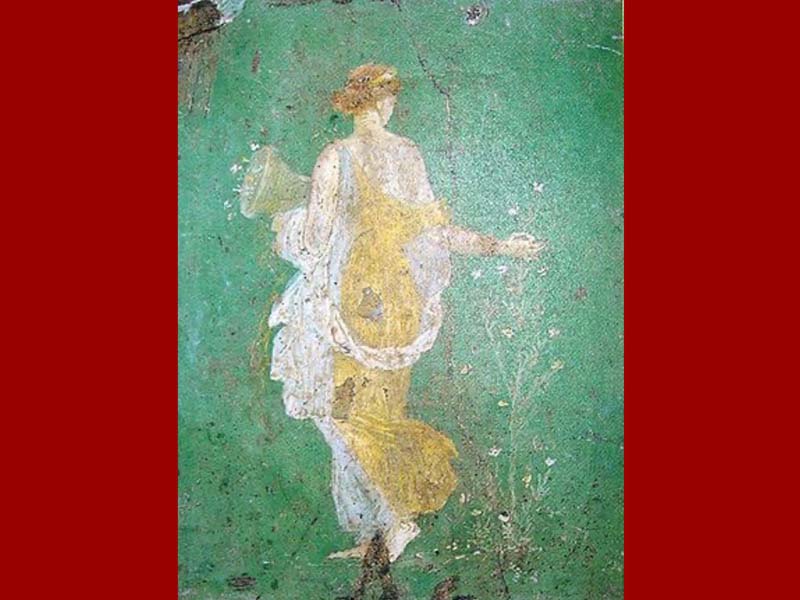
The plants in the garden of the Goddesses/Nymphs (think of Flora, Calypso, Circe, Medea, Europa…), which in our imagination are simply a decorative element, are actually medicinal or psychoactivating plants, at the center of complex systems symbolic, and the goddesses were pharmakeutriai: drug creators. The collection and medicinal transformation of flowers, plants and roots was a preparation for katagoghe, the periodic 'descent' of Kore/Nestis to the Underworld to become Queen of the underworld, a Banshee.
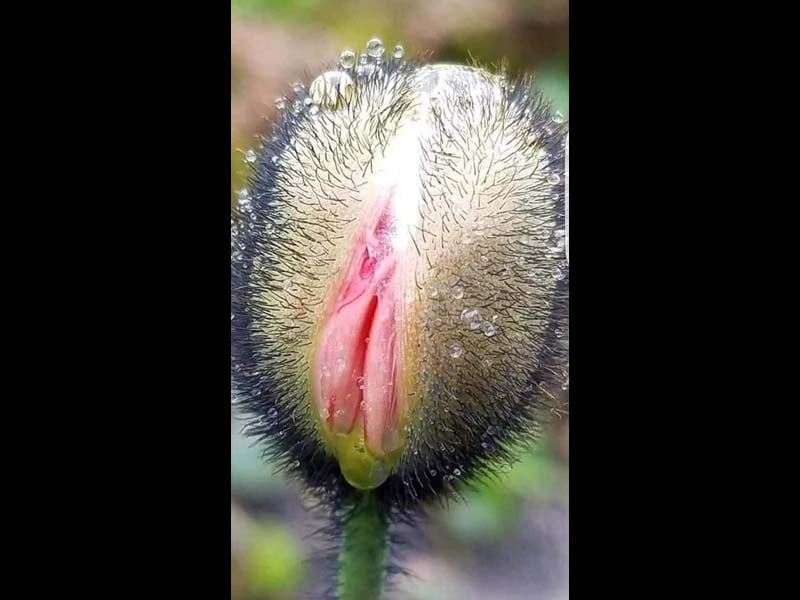
The flower picked at the time of the 'kidnapping' is a narcissus, a psychoactive plant from which our 'narcotics' come; the poppy from which opiates were obtained is sacred to Demeter and Kore; the pomegranate was used for its regulatory properties of depressive states; ergot, which grows on grasses, was used to obtain ergot, the active ingredient in modern LSD; the rapture therefore turns out to be an 'ecstatic rapture', a non-ordinary state of consciousness activated by entheogenic plants, percussion and dance.
It seems that also in Sicily and in Magna Graecia, as in Eleusis, there were mysterious rituals: herbs and flowers, dance and music were at the center of the Anthesphoria (initial stage of Korea, Sicilian festivals in honor of the divine Virgin); these parties were one of the initiatory activities of the young girls, and they recalled the moment in the myth in which Kore and the nymphs dance and collect flowers on the Enna meadow, immediately before the abduction.

Parthenia ('virginity') seems to be an initiatory training path whose instruments were music, weaving, the use of medicinal plants. Diodorus narrates that Artemis and Athena arrive in Sicily to participate in the Parthenia of Kore:
"It is said that Athena and Artemis, brought up together with Kore because they share the same Parthenia, used to pick flowers with her and prepare the peplos together for their father Zeus”. (Diodorus Siculus, Bibl. Hist.)
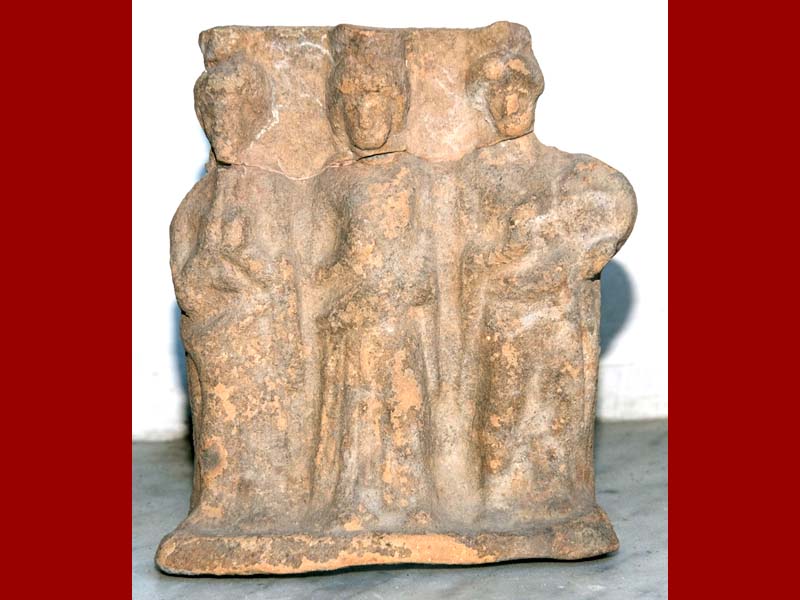
In Sicily we find numerous triads representing, very probably, ATHENA, inventor of thesouls and patroness of weaving; KORE, pharmakeutria and hierophant of the mysteries, holding a flower or fruit in his hand; ARTEMIS whose ritual instrument is the tympanon, who presides over the rites of childbirth and the initiation of girls (souls e tympanon they will then also be used by the Bacchantes in the Dionysian context).
'Kore', usually translated as 'the girl', also means 'apple of the eye' (where the sources come from). Throughout Sicily the very numerous indigenous nymphs, such as Ciane and Nestis, were the very essence of the landscape, of springs, lakes and warm waters: a territory considered sacred; the divine body as an embodied source (cf Map of the Goddesses in Sicily).
In the same way that prehistoric shamans used the drum as an instrument to travel between worlds, as Ninshubur plays the drum to bring Inanna back to life, also in Sicily the Nymphs, whether as mythic figures, priestesses or devotees, were drummers.
In their cult (as in that of the great goddesses related to them) rituals were practiced with drums, auloi and dances: thousands of statuettes and triads of female musicians and frame drums have been found, demonstrating an extremely widespread and popular practice. Alongside these, very few, but significant, written traces (since female practices were transmitted orally and therefore often escaped documentation).
«On one of the seven Aeolian islands, called Lipari, there is a tomb; it is not safe to approach that place at night: in fact, a sound of tympanon and kymbala and laughter would be distinctly heard amidst the din and the sound of rattlesnakes» (Pseudo Aristotle, De mirabilibus auscultationibus, IV century BC).
We will still find similar practices in the Sicilian Middle Ages, at the funeral ceremonies for the Norman kings William I and his son William II, in Palermo.
"During all three days, women and noble matrons, especially Saracens, for whom the pain for the king's death was sincere, dressed in sackcloth and with tousled hair, day and night, walking in crowds, filled the whole city, responding with feeble songs to the sad sound of the drums of a multitude of maidservants and slaves" (Hugo Falcandus, Liber de Regno Siciliae, XII century).
Who are the handmaids and slaves who play the drums for Sicilian noblewomen? We don't know for sure, but it is interesting to note that they could have been both Christian and Muslim or Jewish, because women of all three of these religious faiths, who live more or less peacefully together on the island at this historical moment, shared at the time the practice of funeral mourning with songs and drums, a much older practice than the three monotheistic religions.
Women continued to weep ritually in the following centuries, despite the opposition and prohibitions of Christian, Muslim and Jewish leaders. We know their practices, in fact, almost only thanks to the prohibitions against them, which began in classical Greece with Solon, continued with the very first councils of the church (such as the Nestorian one of 576), and repeated until well into 1600: an evident sign that the funeral rites however continued to be practiced for centuries and centuries.
To tell only 'our' story, Western Christian society ferociously repressed female manifestations of pain: they were considered in contradiction with the idea of eternal life and the survival of the individual soul; but above all (and for all three monotheistic religions), female mourning is a clear testimony of an inauthentic conversion to the 'true' religion, as well as, above all, a powerful public ritual of the number one enemy of orthodoxy: women .
Despair in the face of death will therefore only be allowed in the liturgical space of Holy Week, for the death of Christ; mourning will be masculinized and clericalized, and female public mourning will be strictly prohibited lest it harm the 'just order' of male society.
Thus, from a certain point on, female practices continue to ritualize the moment of death only in domestic environments, in an extremely modest way, no longer choral, and without drums.
The Council of Trent (1545-1563) came to ban dance and non-sacred and non-Orthodox music, considering them acts inspired by the devil. The frame drum, once a ritual instrument, has been ousted from places of worship. But for the Carnival (the real New Year's Eve in the agricultural world), until the last century, in Sicily a funeral rite was practiced - and is still practiced in Campania - for female voices and drums: the dead Carnival was mourned with obscene songs full of double meanings, which recall the ancient aiscrologies, obscene practices for the cults of Demeter.
Together with death, the other passage of status and fundamental archetype is birth: the shamanic journey and the descent into Hell are in fact built on the physiology of childbirth (as Stanislav Grof's studies exemplarily demonstrate). With birth, the symbolic image of the sacred feminine is definitively clarified: the Goddess herself is the Threshold between the worlds, and her Nymphs are her guardians. Let me tell you how.
In the Odyssey we find the most famous description of a Nymphaeum, that of the island of Ithaca:
"…At the end of the port there is an olive tree with thin leaves and next to it a graceful and dark cave sacred to the nymphs called Naiads. Inside there are stone craters and amphorae, where bees accumulate stocks of honey. Inside are huge stone looms and there nymphs weave sea-purple cloth, a marvel to behold. The water flows incessantly. The cave has two doors, the one from the north, a path for the descent of humans, while the other, towards the south, is divine, and mortals do not enter it.".
A cave from which a spring flows, and in which there are two doors, two passages.
We may think it is just a literary invention, yet we have seen that the Mediterranean is full of real Nymphaea.
Alongside the sacred water that flows from the eyes, we therefore have sacred water from a cave, that is, the amniotic fluid that flows from the divine vulva, when 'the waters break' and childbirth takes place. It is through this divine womb that every living being passes before being born, concretely or ritually. What we now consider only a fragment of landscape was experienced by our ancestors as part of the divine body, carnally assimilated to the sacred bodies of women.
This perception is deeply rooted in our past: in a Paleolithic cave in the Fontainebleau area what we can consider an installation in the modern artistic sense was found: three fissures in the rock that evoke a pelvic triangle. It is not a natural rock formation; the fissures are worked artificially, together with many other human interventions to surprisingly modify the hydrology of the shelter and drain the water so that it falls right through the lines that represent the vulva.
As with death, the Door of Birth is also associated with the drum, in various divine figures: in the Syrian-Palestinian Asherah; in the Egyptian Isis, for which the goddess Hathor plays the drum at the moment of childbirth; or in the tambourine player Artemis who, as a newborn, helps her mother as divine midwife to give birth to Apollo (see Frame drum atlas in the Euro-Mediterranean area).
The symbol of the Sacred Door will be re-functionalized in Christian worship: here the Underworld is transformed into hell and the ancient guardians of the threshold, with their drums, become witches; in modern and contemporary Sicily we will call them Fora women, 'Lord from outside', half women and half animals, lovers of music and dance, drummers, bringers of wealth or misfortune, protectors of children; however, the mystical name of the Virgin Mary is still Ianua Coeli (from the Latin 'gate of Heaven'): the only passage recognized as possible today is towards the Heavenly Father, but the iconography remains the same.
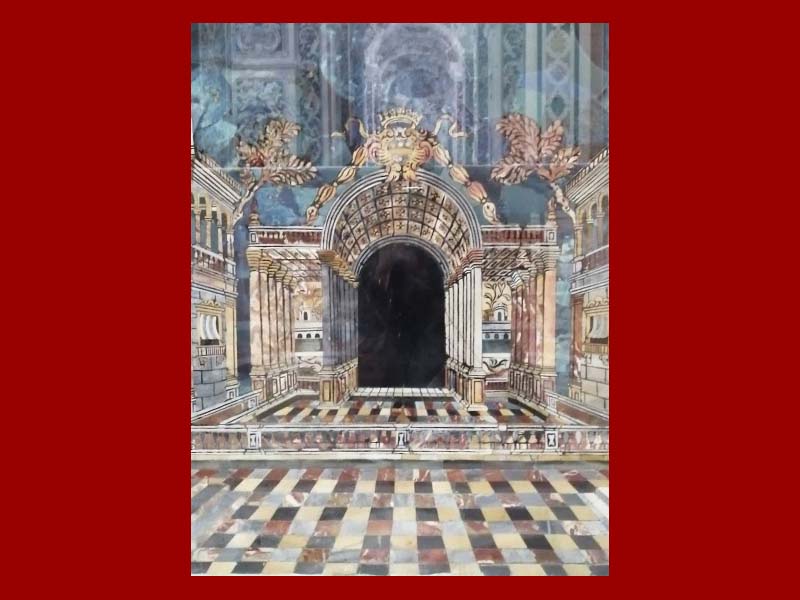
Finally, it is interesting to note that the lozenge we have seen used as a stylization of the eye was also recognized by Marija Gimbutas as a stylization of the life-giving vulva: a symbol abundantly attested in many areas of Old Europe and the Mediterranean. Two 'confluent' symbols for the Gate of Death and the Gate of Birth, both parts of a divine body.
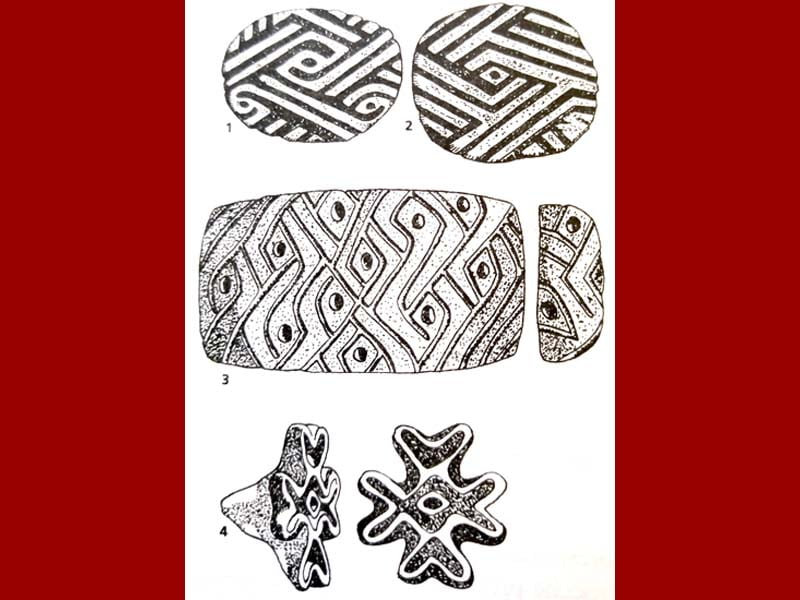
This symbolic overlap between vulva and eye closes a circle and unites two opposites that we are used to thinking of as separate; curiously it is also found in a modern Sicilian saying, in which the female sex is called 'u taly nland': 'the one who looks towards the ground'.
In ancient cultures we had multiple possibilities for ritually guided transitions and transformations: between the various ages of life; between the three worlds (Hell, World, Heaven); between the human and the divine/animal/vegetable level (think of the transformations of shamans into animals, the metamorphosis of Nymphs into trees and medicinal plants, hybrid figures such as sirens); also between the masculine and the feminine (androgynous or 'genderfluid' figures were considered special beings, capable of crossing the Thresholds).
Today we have demonized any non-compliance with the rules and have lost the ability to safely walk through these doors, and even to imagine ourselves as travelers between worlds, in exchange for a religious, psychological and gender normativity that is a cage, and that cuts dangerously out parts of our psyche.
Our ancestors, accustomed to practicing these 'places of uncertainty', were trained to move with respect, to manage the fear of the unknown and of death, to feel connected with the Whole.
Incorrectly faced fears need to cling to certainties that become theoretical shears and concrete concrete walls; walls that invent separations between right and wrong, good and bad, sacred and profane, life and death, and between us and others (and between parts of ourselves, within ourselves). It's time to go back to practicing the uncertainty of threshold places.
Barbara Crescimanno – 2022
REFERENCES
- Barbara Crescimanno (edited by) – The sacred in the feminine. Figures and ritual forms in the Mediterranean area between memory and contemporaneity – European Printing Institute 2021;
- Marija Gimbutas – The language of the Goddess – Venice 2008;
- Stanislav Grof – The last trip. Consciousness in the mystery of death – Feltrinelli 2017;
- Jennifer Larson – Greek Nymphs. Myth, Cult, Lore – Oxford University Press 2001;
- Pier Luigi José Mannella – The Magic Whisper. Incantations, malaises and ceremonial horizons in Sicily – Puppet Museum A. Pasqualino 2015;
- Layne Redmond – When the women played the drums – Venice 2021;
- Francesco Salvestrini, Gian Maria Varanini and Anna Zangarini (edited by) – Death and its rites in Italy between the Middle Ages and early modern times – Florence University Press 2007;
- Medard Thiry, Marie Nieves Liron and Marie-Claude Auffret – “Intersecting perspectives via two prehistoric feminine sexual figurations” – in Did it up and Put it in a bag – Aug. 2021 – Bergren – Norway – pp. 29-44;
- Michael J. Winkelman – Shamans, Priests, and Witches: a cross-cultural study of magic-religious practitioners – Arizona State University 1992;
- Petrus de Ebulo – De rebus Siculis Carmen – critical edition by Fulvio delle Donne – University of Basilicata 2020;
- Aren M. Maier and Michael Dayagi-Mendels – “An Elaborately Decorated Clay Model Shrine from the Moussaeiff Collection” – in Bilder AlsQuellen Images as Sources. Studies on Ancient Near Eastern Artefacts and the Bible Inspired by the Work of Othmar Keel – Academic Press – Friborg 2007.

